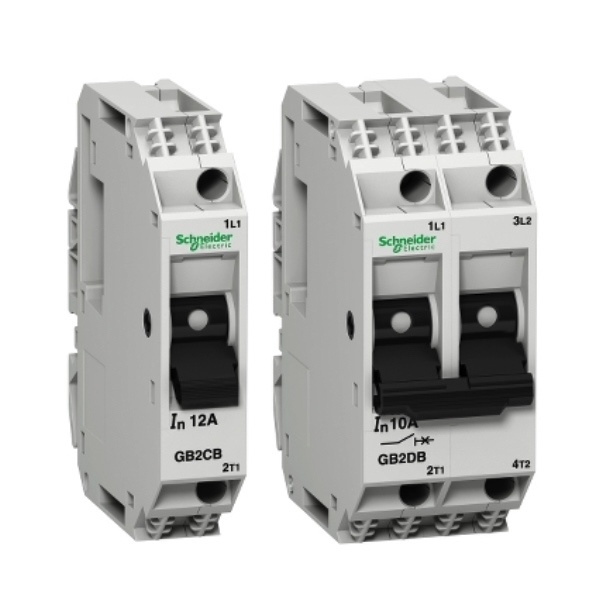Starter Breakers & Disconnects

Electrical codes require that motor control circuits must be provided with thermal protection and magnetic protection. Thermal protection protects the circuit against overload and locked rotor conditions. Magnetic protection protects the circuit against short circuit conditions. There are two methods of motor control system protection that are commonly used today. The 3-component system, where circuit breakers, magnetic contactors and thermal overload relays are installed to control and protect the motor, and the 2-component system, where only a Thermal Magnetic Circuit Breaker (TMCB) and contactor are used.
The 3-component system has the thermal protection and the magnetic protection in two separate units, which may lead to mismatching of correct specification when either of the units are replaced. This could lead to non-coordination of the protection devices. The 2-component system’s TMCB has a built-in overload relay and magnetic trip mechanism in one unit, reducing the vulnerability of mismatching of specifications.
Schneider Electric TeSys GB2 Motor Circuit Protectors are thermal-magnetic circuit protectors that enable reliable protection of industrial equipment control circuits, such as power supplies, PLCs, control circuits and all small devices capable of generating high current peak.
Motor Control Basics
Motor control allows operational control of electrical motors in various environments.
Motor control circuits provide a safe way to operate electrical motors. Back when motor control circuits were in their infancy, it would have been common to see a simple disconnect switch that would be used to turn on and off a motor. Depending on the size of the motor and how much voltage was required, operating this disconnect would have been dangerous, with a very high possibility of arcing or electrocution. Not to mention that when the disconnect was actuated, the large amount of inrush current would have damaged the motor over time.
In today's motor control circuits, there are a few common pieces of hardware.
A circuit breaker is used to protect the motor and any hardware downstream. A contactor and an overload relay are connected together and function in tandem to allow for remote and safe operation of the motor. The contactor functions much like a relay, allowing for a smaller electrical circuit to remotely close the motor contacts, starting the motor. The overload relay is designed to protect the motor in the case of a prolonged overcurrent event. These two devices are wired in series, so that if the overload relay detects an overcurrent event, the contactor will open the motor contacts, shutting off power to the motor.
The other two most common types of motor control hardware are a soft starter and a Variable Frequency Drive (VFD).
Both of these devices function in a similar way to the motor circuit with some added functions. The soft starter is designed to reduce large inrush current to the motor upon startup. This “soft starting” of the motor will prolong its life and allow for safer operation. The VFD performs the soft start functions, but also allows for speed control of the motor. This speed control is critical in many different environments and has made VFDs one of the most common and safe to use motor control circuits today.

